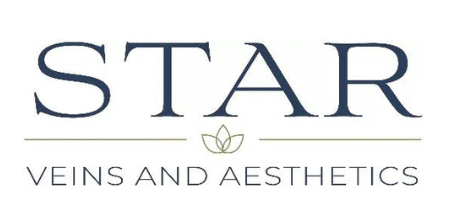Varithena vs. Traditional Vein Treatments: What Patients Should Know
If you’ve been struggling with varicose veins, you’ve likely heard about Varithena — a minimally invasive, FDA-approved treatment designed to relieve discomfort, improve appearance, and restore healthy blood circulation. Unlike traditional surgery, the Varithena procedure offers quick results with minimal downtime, making it a popular choice for patients across Long Island and beyond.
Under the skilled care of Dr. Gulshan Sethi, one of the most trusted vein specialists in the region, patients can expect precision, comfort, and exceptional long-term outcomes. But before choosing this treatment, it’s essential to understand what Varithena is, how it works, and what the potential dangers of Varithena and Varithena side effects might be.
What Is Varithena?
Varithena is an advanced, non-surgical treatment used to close unhealthy varicose veins in the legs. It utilizes a special microfoam formulation containing polidocanol, a sclerosing agent that causes diseased veins to collapse and seal shut. Once the treated vein closes, blood naturally reroutes to healthier veins, improving circulation and reducing symptoms such as:
- Leg swelling and heaviness
- Aching or throbbing pain
- Visible, bulging veins
- Fatigue and restlessness in the legs
Because Varithena doesn’t require surgery, anesthesia, or hospitalization, it’s considered one of the most convenient and effective options for vein restoration. Patients can usually return to normal activity within a day.
To learn more about similar procedures, explore Minimally Invasive Vein Treatments performed by specialists like Dr. Gulshan Sethi.
The Varithena Procedure: What to Expect
The Varithena procedure is performed in a comfortable, outpatient setting. Here’s what typically happens during your visit:
- Consultation & Vein Mapping
Dr. Gulshan Sethi begins by performing an ultrasound evaluation to identify the diseased veins. This ensures that the Varithena procedure targets the correct areas. - Preparation
The leg is cleaned and prepped for injection. Local anesthesia may be used for comfort, though it’s rarely necessary. - Microfoam Injection
The Varithena microfoam is injected into the affected vein through a small needle. The foam travels through the vein, displacing blood and causing the vein walls to collapse. - Compression & Recovery
Gentle compression is applied after the treatment. Most patients can walk immediately after the Varithena procedure and resume light activity within hours.
Compared to other methods like radiofrequency ablation or laser treatments, Varithena offers a faster and gentler experience without the need for incisions or heat-based devices.
For a deeper comparison of treatment types, you can read Radiofrequency Ablation vs. Steroid Injection: Which Treatment Is Right for You?.
Benefits of the Varithena Procedure
The Varithena procedure has gained popularity due to its safety, simplicity, and proven results. Below are the main benefits patients experience:
- Minimally invasive: No cutting, no stitches, and no general anesthesia.
- Fast recovery: Most patients walk out of the clinic the same day.
- High success rate: Excellent closure rate for both large and small varicose veins.
- Aesthetic improvement: Significant reduction in visible veins and leg discoloration.
- Comfort: Little to no pain during and after treatment.
Dr. Gulshan Sethi’s clinic offers personalized Varithena treatment plans, ensuring that each patient’s needs and vein patterns are carefully evaluated for optimal results.
To see what kind of outcomes to expect, visit Spider Vein Treatment Before and After – What to Expect.
Understanding the Dangers of Varithena
Although Varithena is FDA-approved and generally considered safe, every medical procedure carries some risks. Understanding the dangers of Varithena allows you to make an informed decision and prepare for your treatment confidently.
1. Allergic Reactions
While uncommon, some patients may experience allergic reactions to the foam’s ingredients. Always inform your doctor about allergies or sensitivities prior to treatment.
2. Thrombosis (Blood Clot Formation)
Deep vein thrombosis (DVT) is a rare but potential complication. However, under the supervision of an experienced doctor like Dr. Gulshan Sethi, this risk is minimized through pre-treatment screening and proper technique.
3. Vein Inflammation
Mild inflammation or phlebitis may occur, which usually resolves within a few days with rest and compression therapy.
4. Skin Discoloration
Temporary bruising or discoloration is one of the most common Varithena side effects, but it fades over time.
When performed by a skilled vein specialist, the dangers of Varithena are minimal and manageable. To learn more about alternative treatments for vein disease, visit Exploring Medical Treatments for Varicose Veins.
Common Varithena Side Effects
Most patients tolerate Varithena extremely well. Still, it’s helpful to know the possible Varithena side effects that might appear temporarily:
- Itching or mild pain at the injection site
- Localized swelling
- Bruising
- Temporary hardness under the skin
- Leg fatigue or tightness
These Varithena side effects usually subside within a few days and can be managed with gentle movement, compression stockings, and following Dr. Sethi’s post-procedure instructions.
For visual examples of treatment progress, check Before and After Spider Vein Removal.
Varithena vs. Other Vein Treatments
Varithena is often compared with sclerotherapy and laser ablation. Each has unique advantages:
- Sclerotherapy works best for small spider veins.
- Laser treatments like Endovenous Laser Ablation are effective for targeted vein closure.
- Varithena excels at treating large, twisted, or deep varicose veins.
Many patients find that Varithena provides faster healing and less discomfort than traditional methods. To explore comparisons, see What Is the New Treatment for Veins: Exploring the Latest Innovations.
Why Choose Dr. Gulshan Sethi for Varithena?
When it comes to vein care, the skill and experience of your doctor matter. Dr. Gulshan Sethi is known as one of the Best-Rated Vascular Doctors on Long Island. With years of expertise in minimally invasive vein procedures, he ensures that every Varithena procedure is tailored to the patient’s anatomy and medical condition.
He and his team also provide education about ongoing leg health and help patients maintain long-term results. You can also explore his clinic’s other services like Spider Vein Removal and Vein Treatment Options.
Frequently Asked Questions About Varithena
1. Do you have to wear compression stockings after Varithena?
Yes. Wearing compression stockings after the Varithena procedure is recommended to support proper blood flow and reduce swelling. Dr. Gulshan Sethi typically advises patients to wear them for one to two weeks post-treatment.
2. Does insurance cover Varithena?
Most insurance providers, including Medicare, cover Varithena when it is medically necessary for symptomatic varicose veins. Dr. Sethi’s office assists patients in obtaining insurance authorization for the Varithena procedure.
3. Is Varithena better than sclerotherapy?
While sclerotherapy is effective for smaller veins, Varithena treats larger and more complex varicose veins. In many cases, patients who didn’t respond to sclerotherapy find great success with Varithena. Learn more in Sclerotherapy Before and After – What to Expect.
Final Thoughts
The Varithena procedure represents a significant advancement in vein care. It provides lasting relief, excellent cosmetic results, and minimal downtime—all without surgery. When performed by an experienced vein specialist like Dr. Gulshan Sethi, Varithena offers patients an opportunity to reclaim comfort, confidence, and better vascular health.
Understanding the dangers of Varithena and recognizing possible Varithena side effects helps ensure realistic expectations and safe recovery.

